2 November 2017
(Observations made between April 2014 and September 2015)
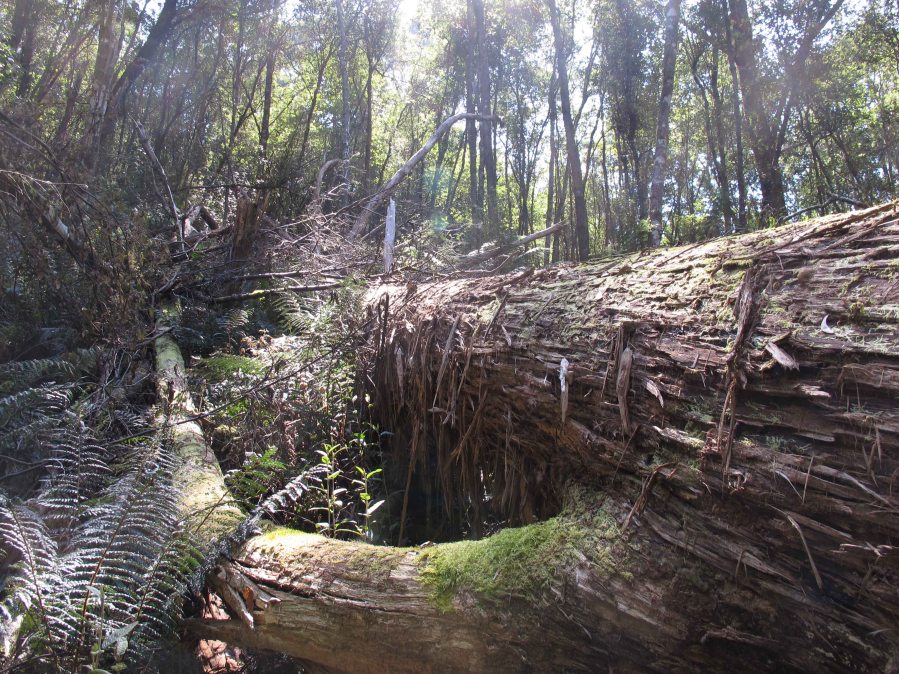
In early April 2014 I heard the loud crash of a falling tree down the hill from our house. The origin of such sounds is difficult to pinpoint but a week or so later when visiting Thismia Gully I discovered its source. A massive stringybark (Eucalyptus obliqua) about 50 metres long, had fallen across the gully. The root end of the tree, which had been dead for some time, is close to the bed of an ephemeral creek and had no living roots to hold it in place in the waterlogged soil.
Access to three sections of the trunk was possible without having to do too much clambering over the numerous dogwood (Pomaderris apetala) and musk (Olearia argophylla) that the tree had brought down with it. While still standing, the stag (upper branch) of the tree had emerged from above the canopy of blackwood (Acacia melanoxylon) and had lost most of its bark. In places it was soft and spongy and covered in a white, toothed resupinate fungus. This, along with its convenient height, made collection and observation easy. A large lower branch about mid way along the trunk was also reasonably easy to access but the middle section of the main trunk was beyond reach. The lower end of the trunk was also accessible. I continued to check the log regularly for until September 2015.
My first collection from the stag end is dated April 8 2014 and I eventually identified it as Physarum virescens. The fruiting bodies comprise clustered, greenish-yellow stalked and sessile (stalkless) sporangia and plasmodiocarps. They were in good condition when I collected them, i.e. the peridium was mostly intact. According to the Atlas of Living Australia (ALA) this is the first record for Australia and the ALA records only two other collections from New Zealand. It can be common in the US. (S. Stevenson pers. comm.) The same species appeared again at the same place on January 21 2015 but it has not reappeared. I have not found it anywhere else.
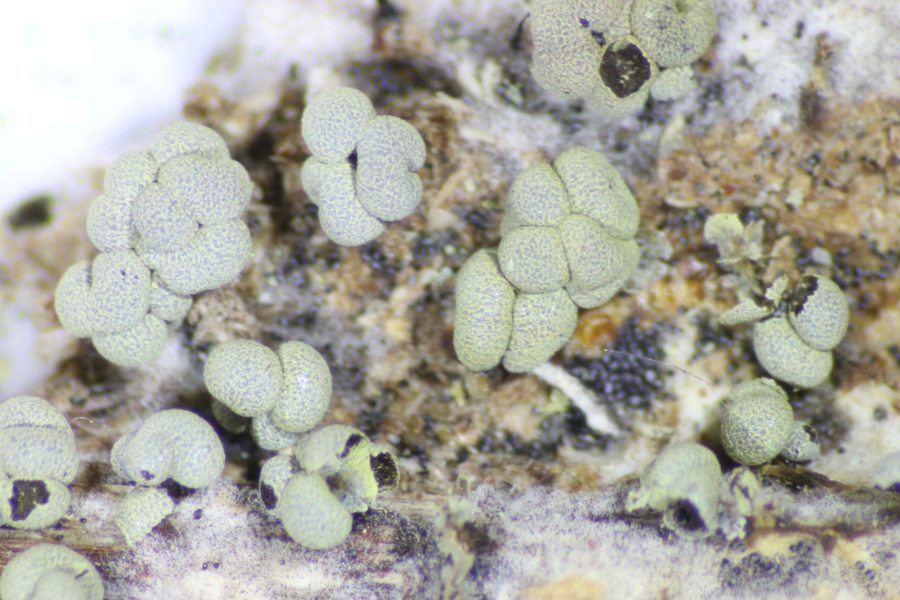
Alongside the P. virescens was Paradiacheopsis cf. rigida, a tiny 1–1.5 mm high fruiting body that appeared in extensive colonies after each bout of rain between April and June 6th, the date of the last collection. I have tried to collect equally tiny species from newly fallen trees many times, but the substrate is often extremely hard making collecting undamaged specimens almost impossible. The spongy nature of the stringybark made this relatively easy.
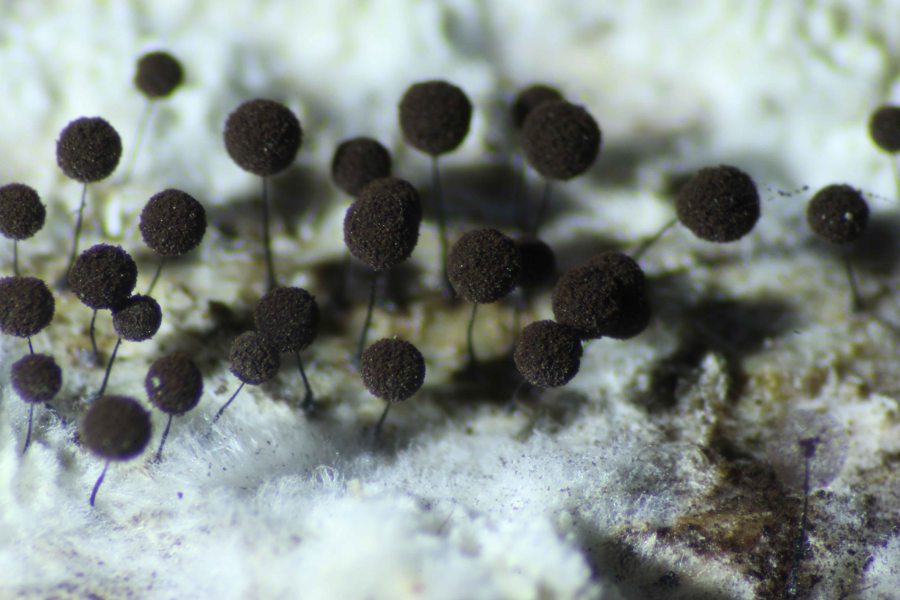
Intermingled with the P. rigida was the maypole-like Enerthenema papillatum, which also reappeared after rain. This species was common in 2014 and collected from numerous substrates in different locations. Before 2014 I had only collected it once and I have not seen it since—such is the unpredictable nature of slime moulds.
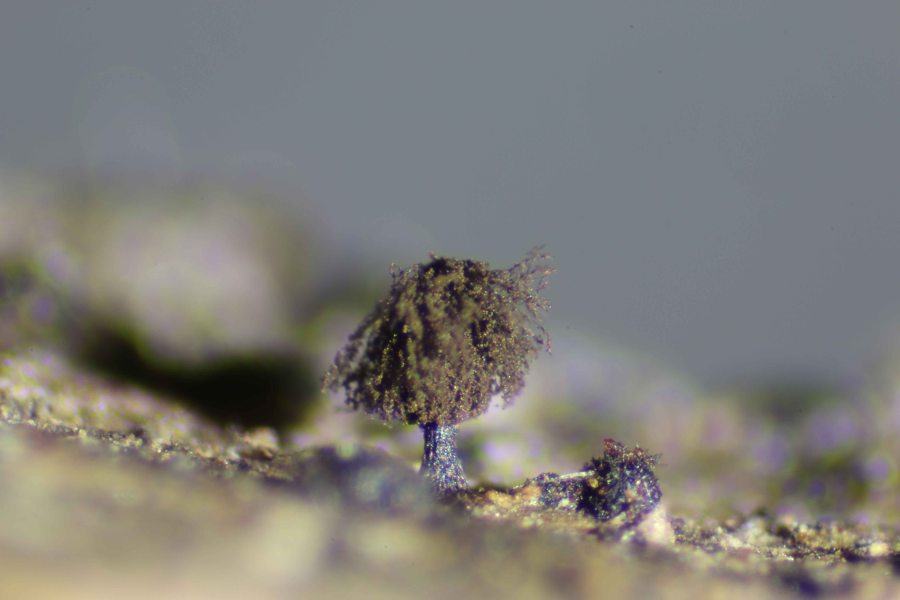
Physarum viride was also common on the stag in 2014. I had stopped collecting this species because it was very common when I started collecting slime moulds in about 2012. However, it only appeared twice in 2015 and was the only species I collected from the stag in 2015.
Also collected at various sites along the trunk in 2014 were A. globosa, A. ferruginea, Arcyria riparia, Physarum album, Comatricha alta, Trichia botrytis, Cribraria sp. Stemonitis sp. and Lycogala epidendrum.
September – October 2015
In September/October 2015 the stag end, being off the ground, was dry and unproductive. The root end, which was also off the ground but in a shaded location above the ephemeral waterway, had extensive colonies of numerous different species possibly because it was still covered with stringy bark, which shaded the underlying wood and stopped it drying out. The slime moulds species at various stages of maturity included: Metatrichia floriformis with Ceratiomyxa fruticulosa, Trichia affinus, Trichia decipiens, Diderma cf. subincarnatum, Comatricha sp and Clastoderma debaryanum.
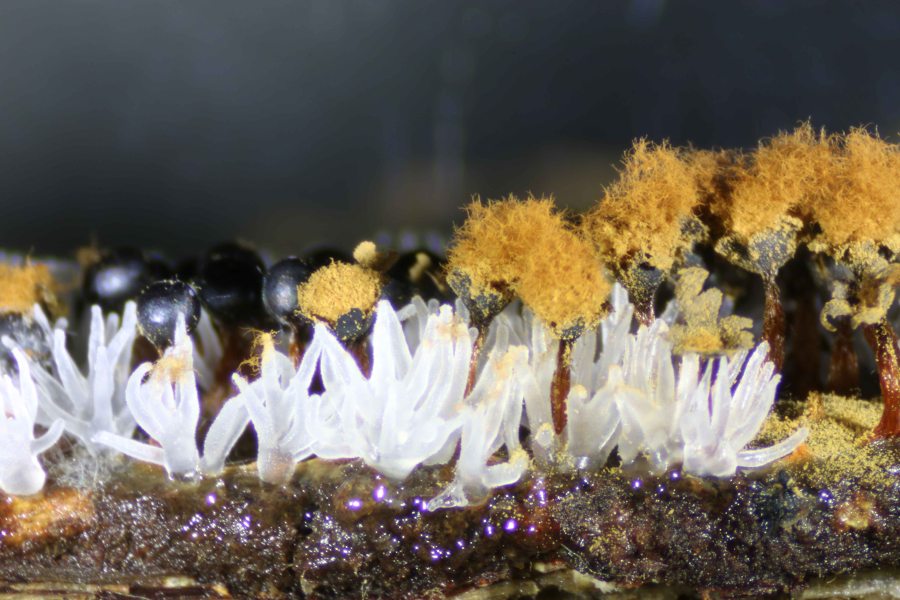
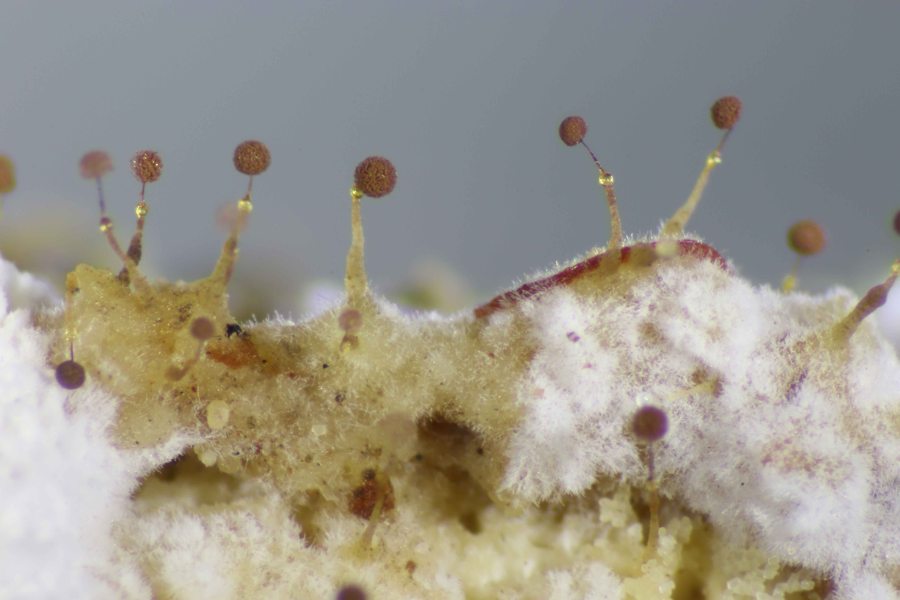
The beautifully iridescent Elaeomyxa cerifera was on bryophytes on a severely decayed section of the stringybark roots.
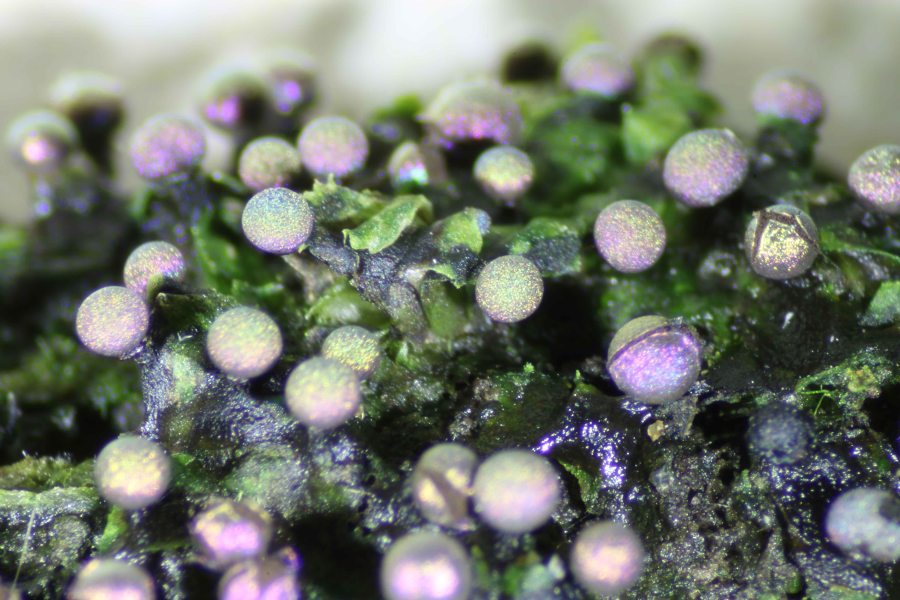
I had been collecting and observing slime moulds for about four years in the same location (i.e. withing 1 kilometer of my home) when I started monitoring this stringybark log. Along with previous observations, I realised that this variety of different species on a newly fallen tree is not unusual. The logs seem to remain productive for about a year after they fall.
I don’t know whether this has been reported previously or if my observations are significant because most books about myxomycetes concentrate on their identification, seasonality and substrate preferences rather than information about their ecology.
(Footnote: The steepness of the gully soon got the better of me and I now visit it infrequently. The last time was in early 2017 when numerous trees had fallen over the stringybark making most of the trunk inaccessible.)





